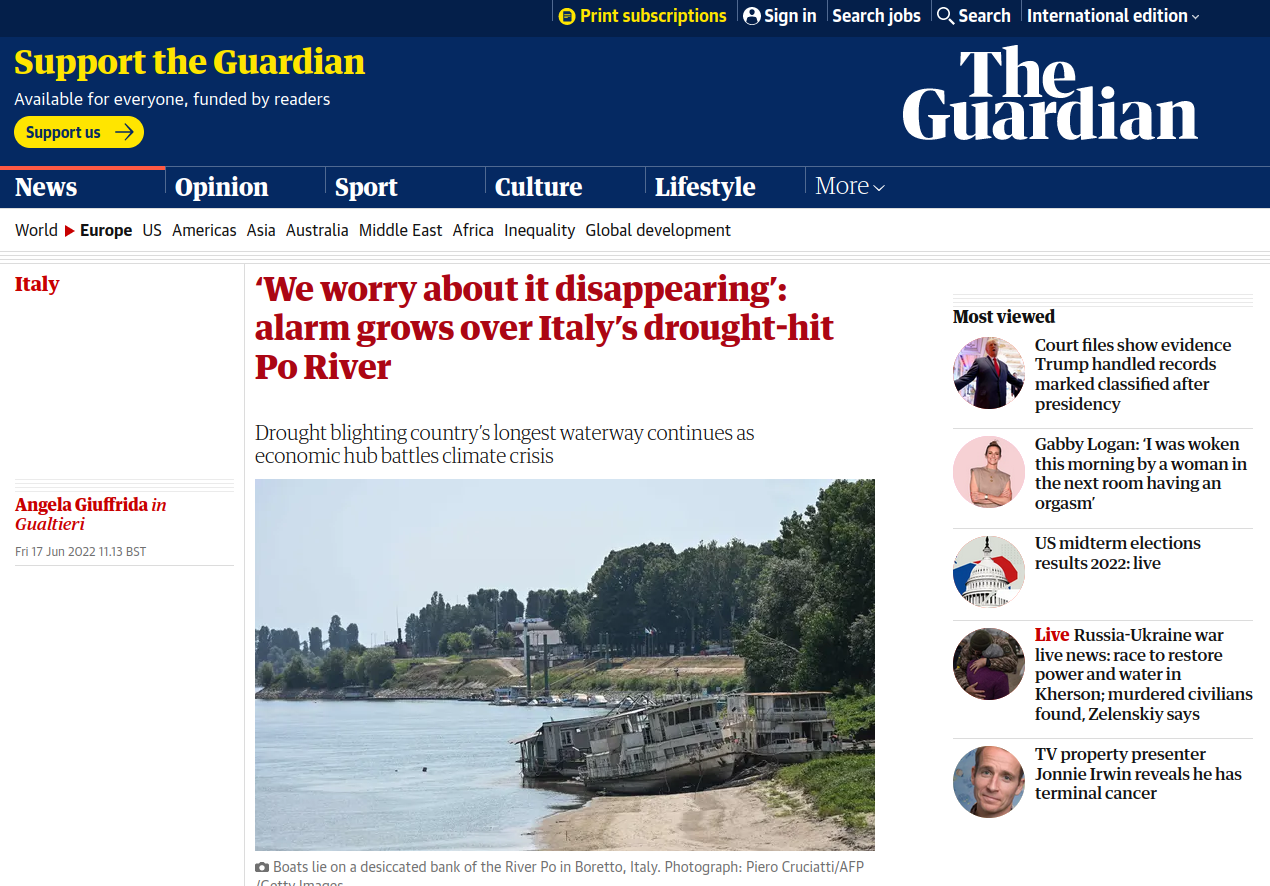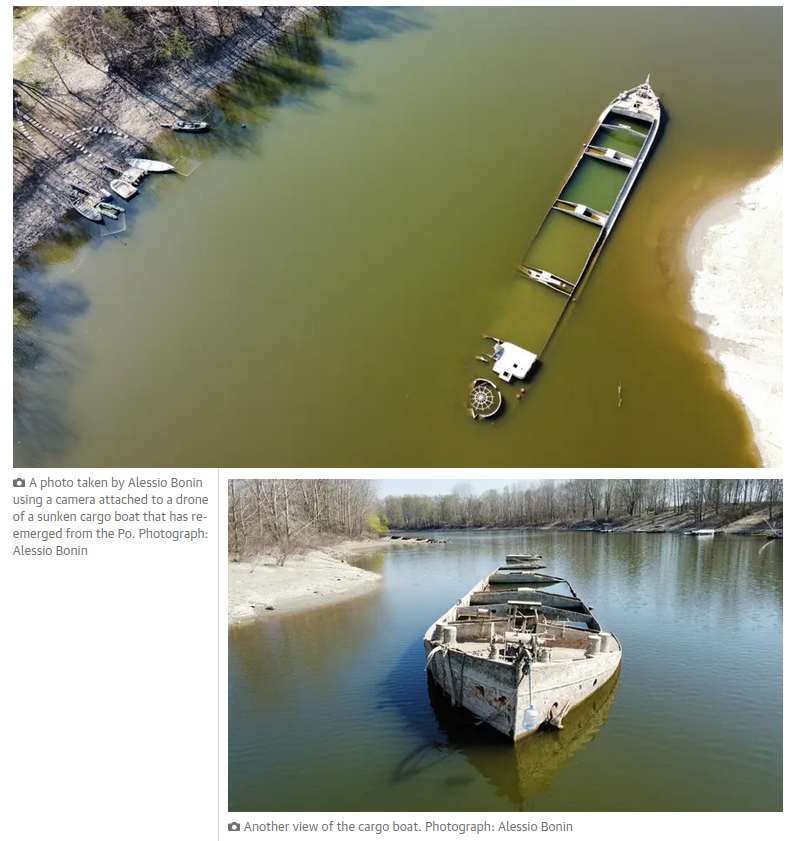Snow cover in a changing climate
Introduction to Climate Change - UniTrento 2024/25
2025-05-19
Outline
- Snow: what is it, why is it important, how is it measured
- European Alps: Snow climatology and past trends
- The future snow cover in the European Alps
What is snow?
(for you)?
Your opinion
Other opinions
“Acqua.”
“Niederschlag.”
“Quando ero giovane, pura gioia. Adesso solo scocciatura.”
“I don’t know what snow is.”
“Stupore, allegria. In macchina paura. Bello in montagna.”
Why is snow important?
Albedo
Albedo … more examples

Snow as natural water storage
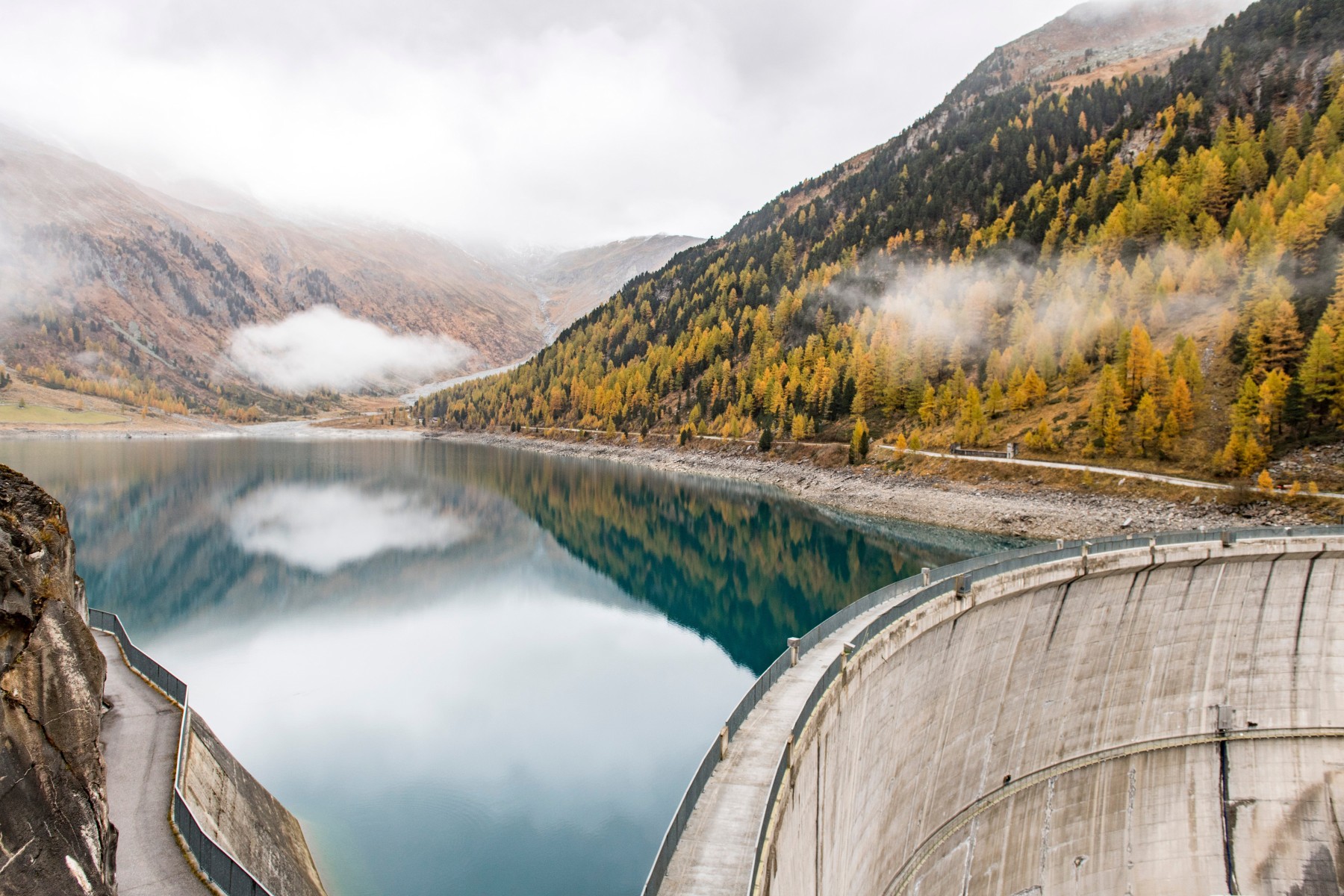

2022 Drought in the Po valley
2022 Drought in the Po valley -> Snow drought

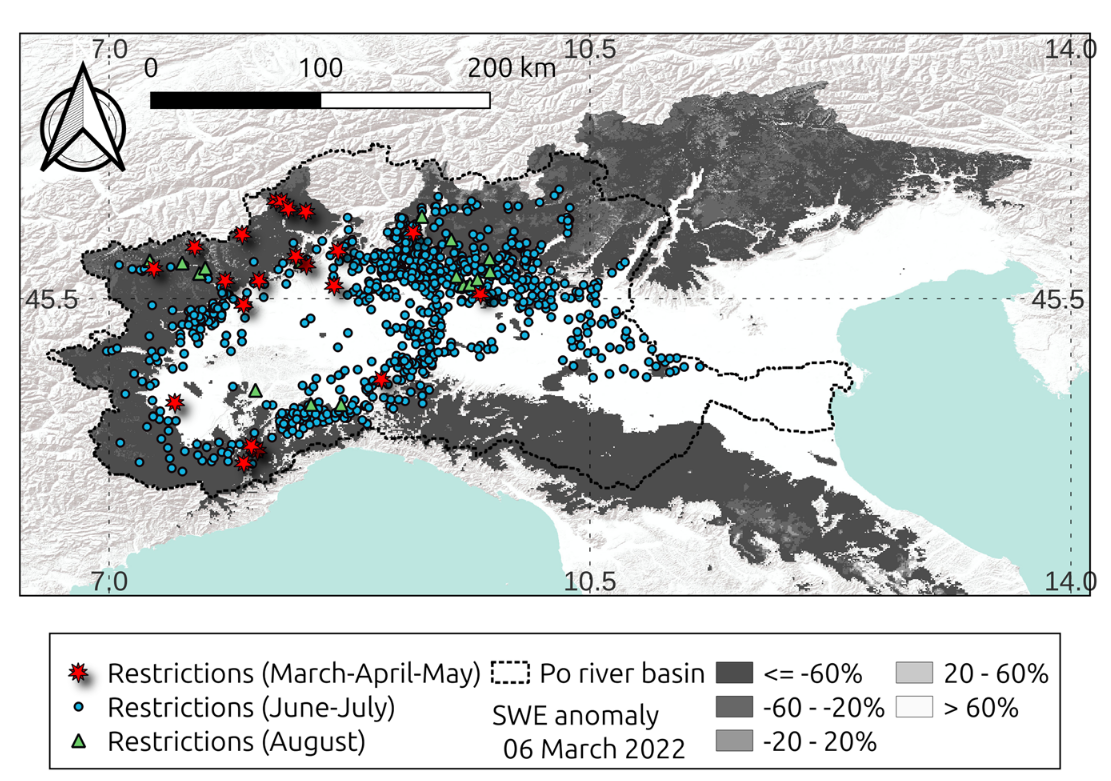
How is snow measured?
(Focus here: macroscopic)
In-situ
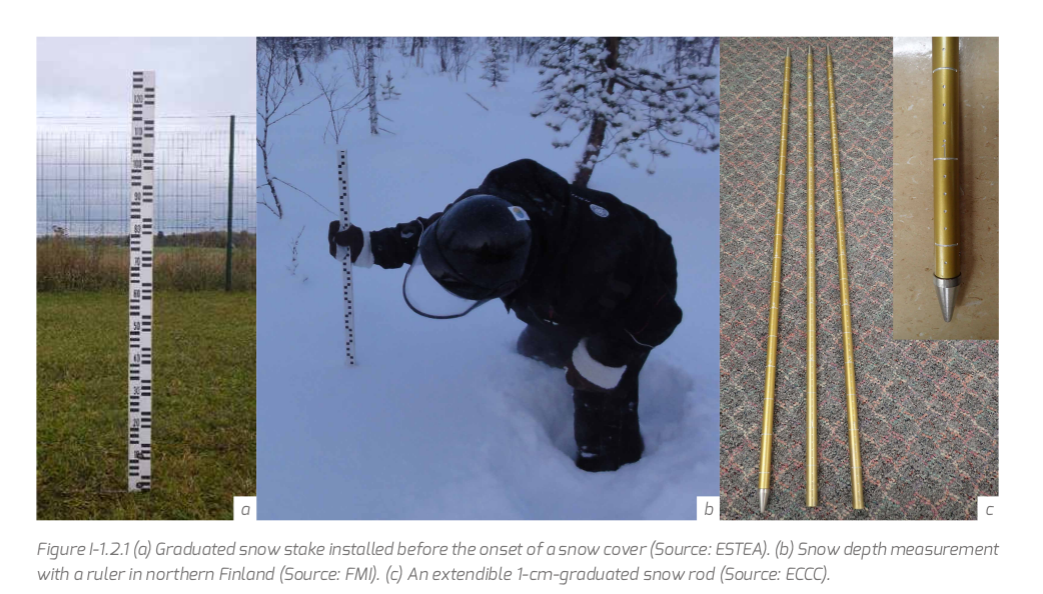
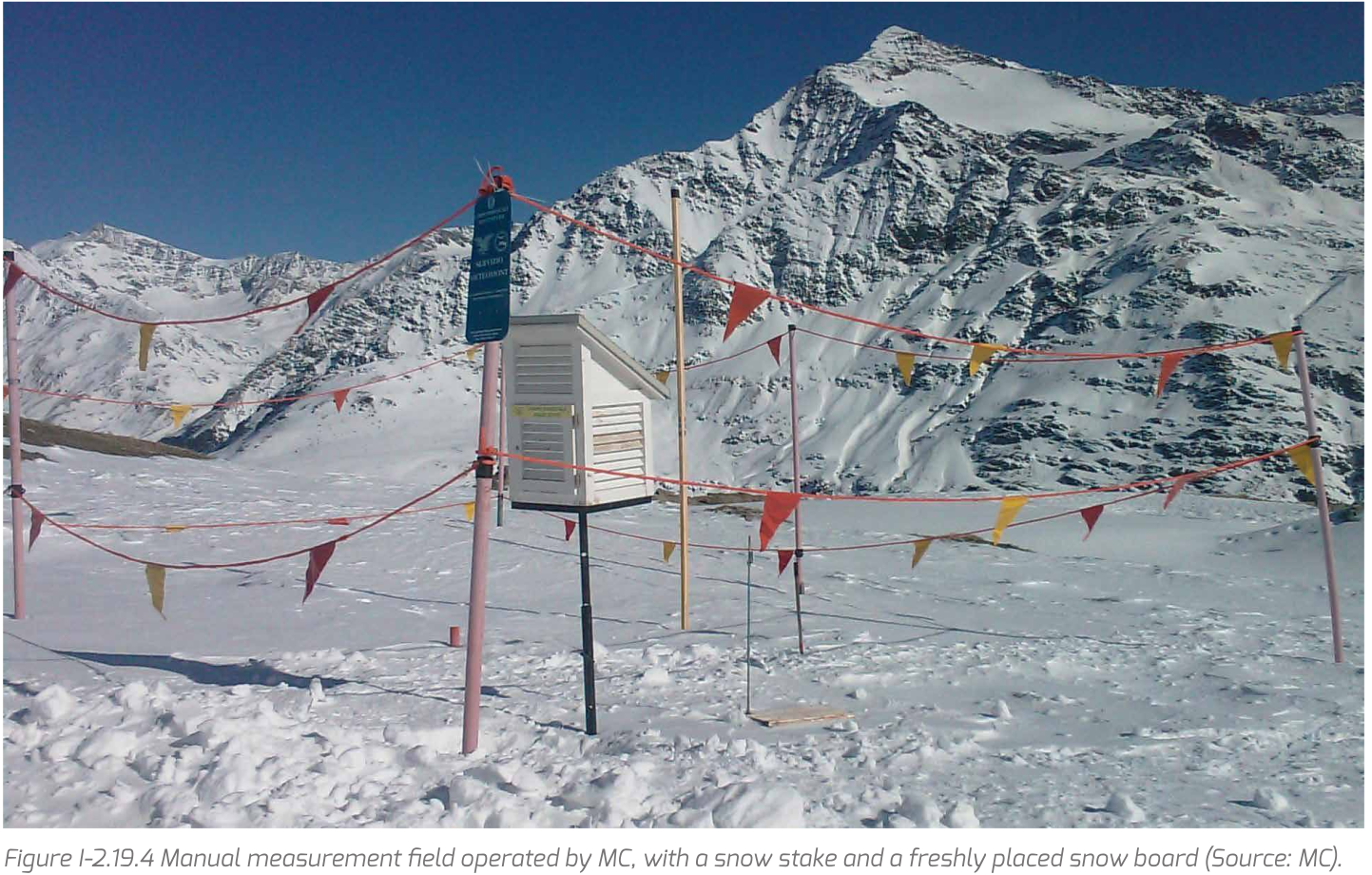
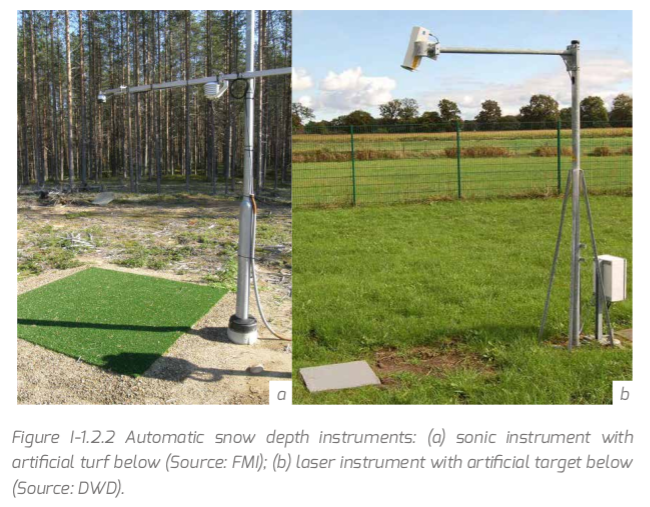
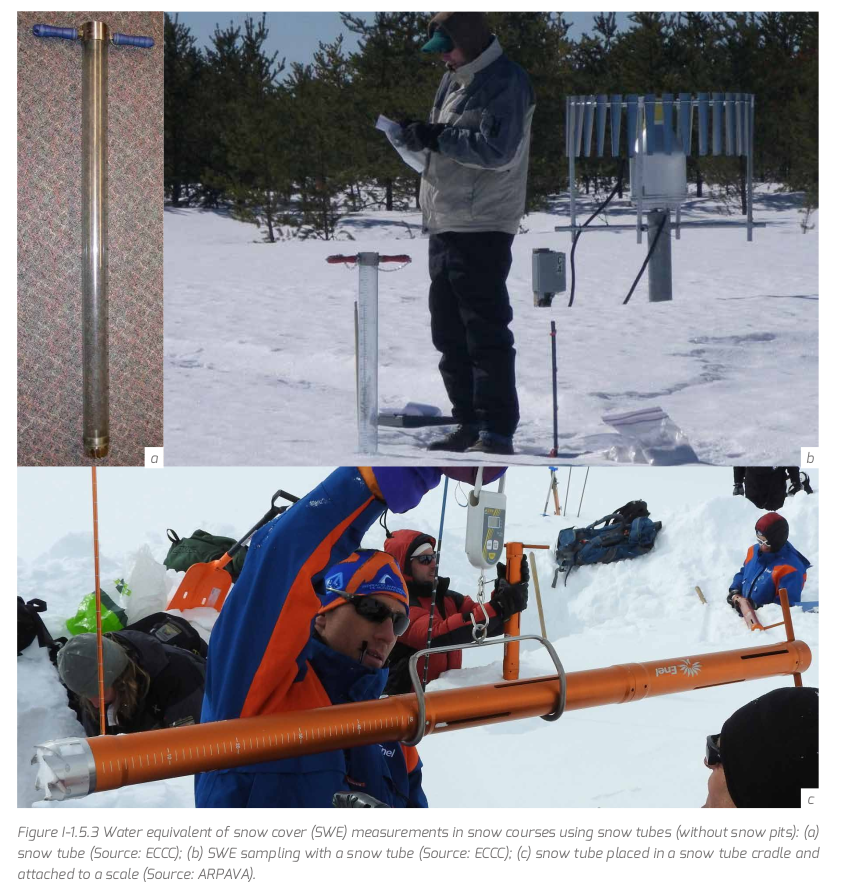
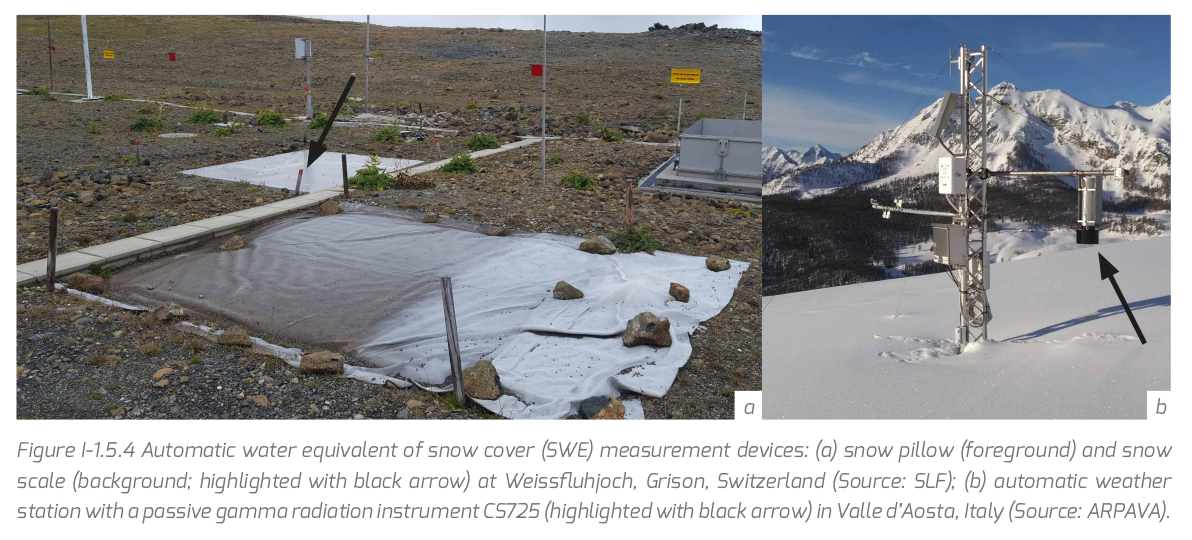
From remote
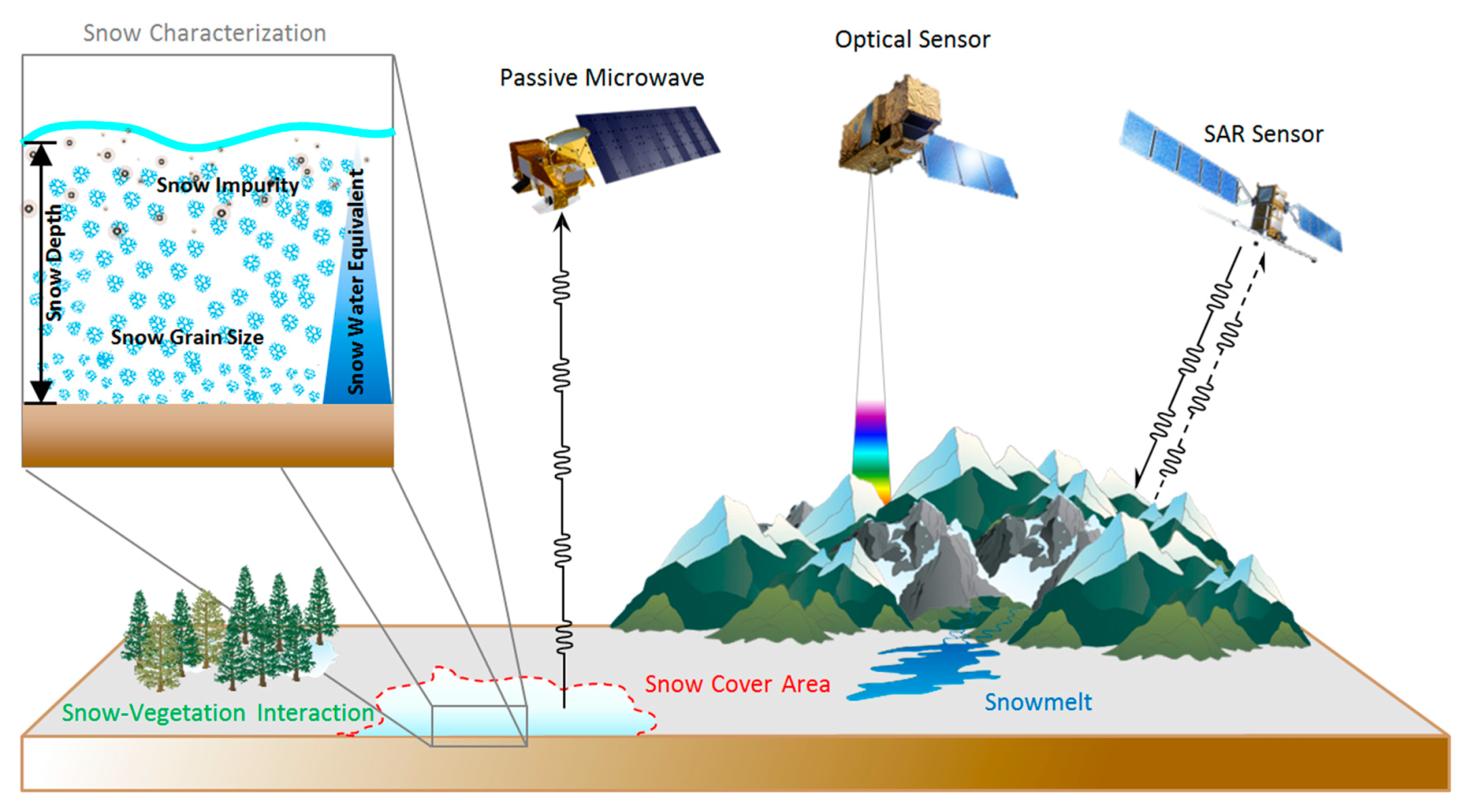
Water equivalent, depth, bulk density
\[ SWE = HS * \rho \]
Example: 75cm depth, 300mm SWE
\[ \rho = \frac{300 mm}{75 cm} = \frac{300 \frac{kg}{m^2}}{0.75 m} = 400 \frac{kg}{m^3} \]
Common snow bulk densities
| Type | Density |
|---|---|
| Freshly fallen snow | 50-100 |
| Damp new snow | 100-200 |
| Settled snow | 200-300 |
| Wind packed snow | 350-400 |
| Firn | 400-800 |
| Very wet snow | up to 800 |
| Glacier ice | above 800-900 |
Some climatological snow cover indicators
- Snow depth (HS)
- Depth of snowfall (HN)
- Snow water equivalent (SWE)
- Snow density (\(\rho\))
- Snow presence (yes/no)
- Snow cover duration (SCD)
- Snow covered area (SCA)
What is a snow scientist?
- operational / civil protection (avalanche risk, snowload)
- engineers that develop and test instruments
- field studies
- modelers (numerical models of varying complexity)
- climatologists (-> me)
- hydrologist
- physicists (study mechanical and physical properties)
- …
-> there is not “the” snow scientist, often a combination
Climatolical analyses of snow cover
- Interdisciplinarity:
- atmosphere
- often mountains (so complex physics)
- accumulation (land surface)
- impacts (runoff, hydropower, agriculture, tourism, …)
- Scale issues and variability in
- space
- time
- both
Seasonality
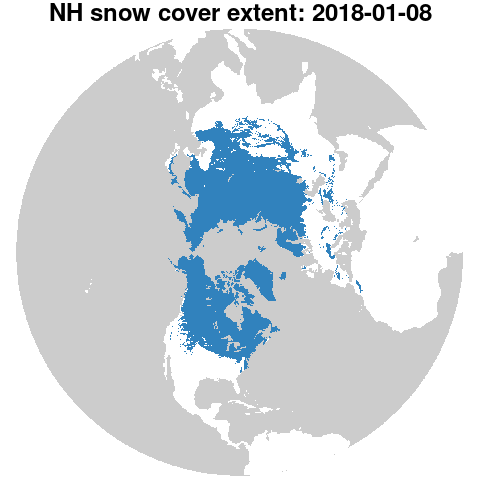

Inter-annual variability

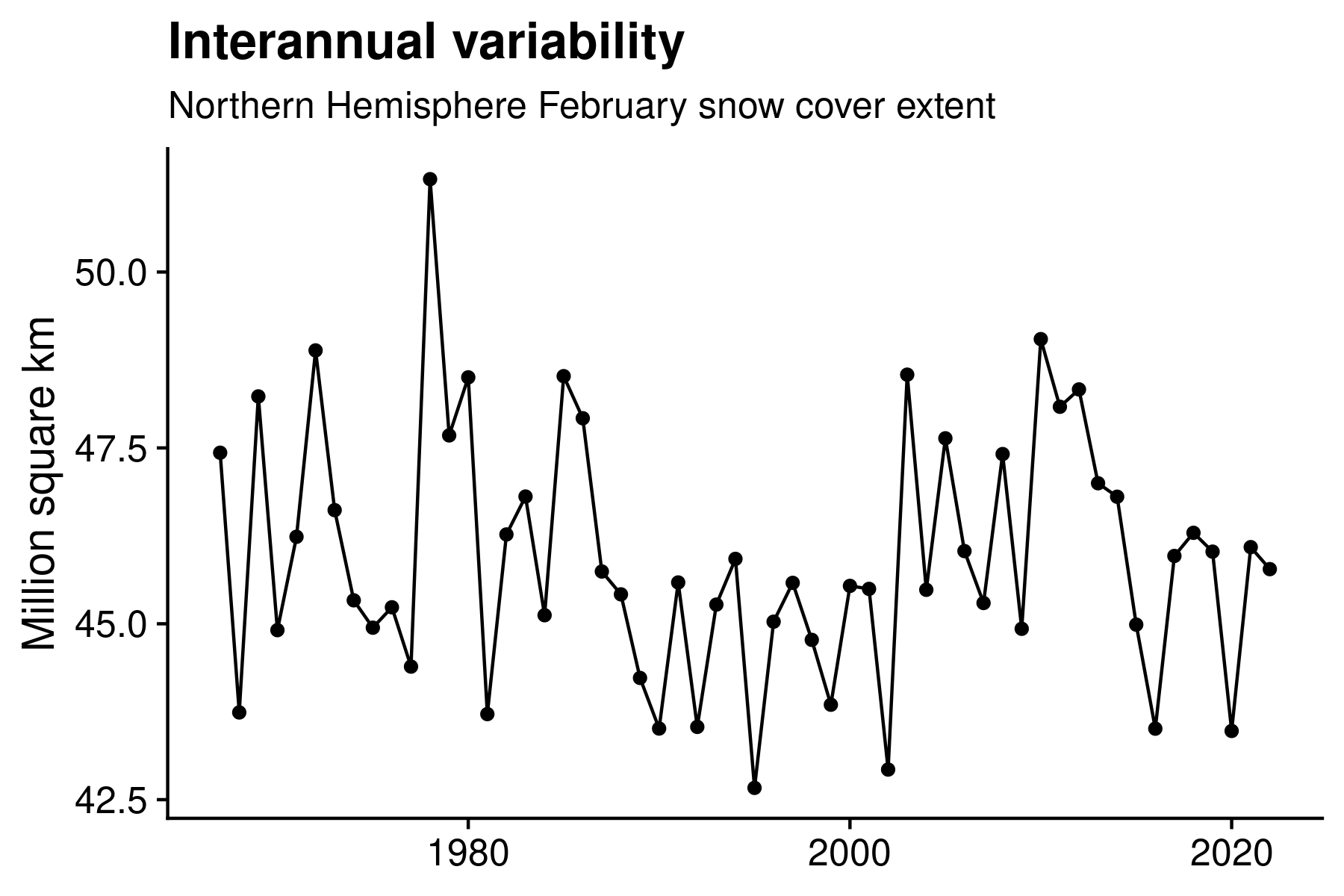
Long-term trends


Magnitude of area covered by snow

January on average 47 million km² ~
- 150 Italys
- 7580 provinces of Trento
- 1/3 Northern Hemisphere land surface
Guess the snowfall
Guess the snowfall - details 1/3
Trento Laste
46.07, 11.12, 312 m.a.s.l.
avg Jan:
- 1.6°C
- 42mm
- 16cm snowfall
Bondone (viote)
46.01, 11.06, 1495 m.a.s.l.
avg Jan:
- -2.5°C
- 50mm
- 51cm snowfall
Guess the snowfall - details 2/3
Sukayu Onsen
40.65, 140.85, 925 m.a.s.l.
avg Jan:
- -7.5°C
- 117mm
- 454cm snowfall

Guess the snowfall - details 3/3
Vostok Station
-78.47, 106.85, 3488 m.a.s.l.
avg Jul:
- -70.4°C
- 2mm
- 2-6cm snowfall
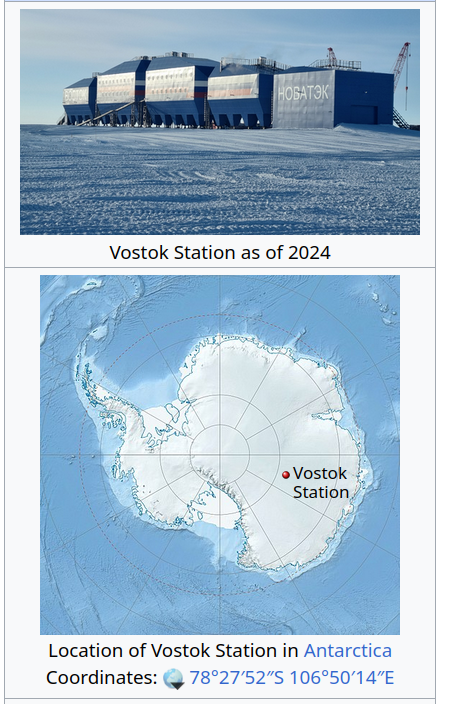
European Alps: Snow climatology and past trends
“Climate is what we expect.
Weather is what we get.”
The Alps shaping the weather
Data source: Alpine-wide in-situ observations
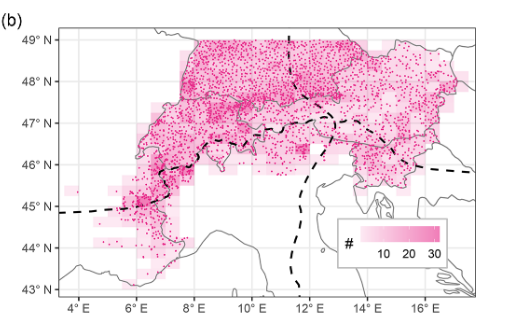
What comes after elevation?
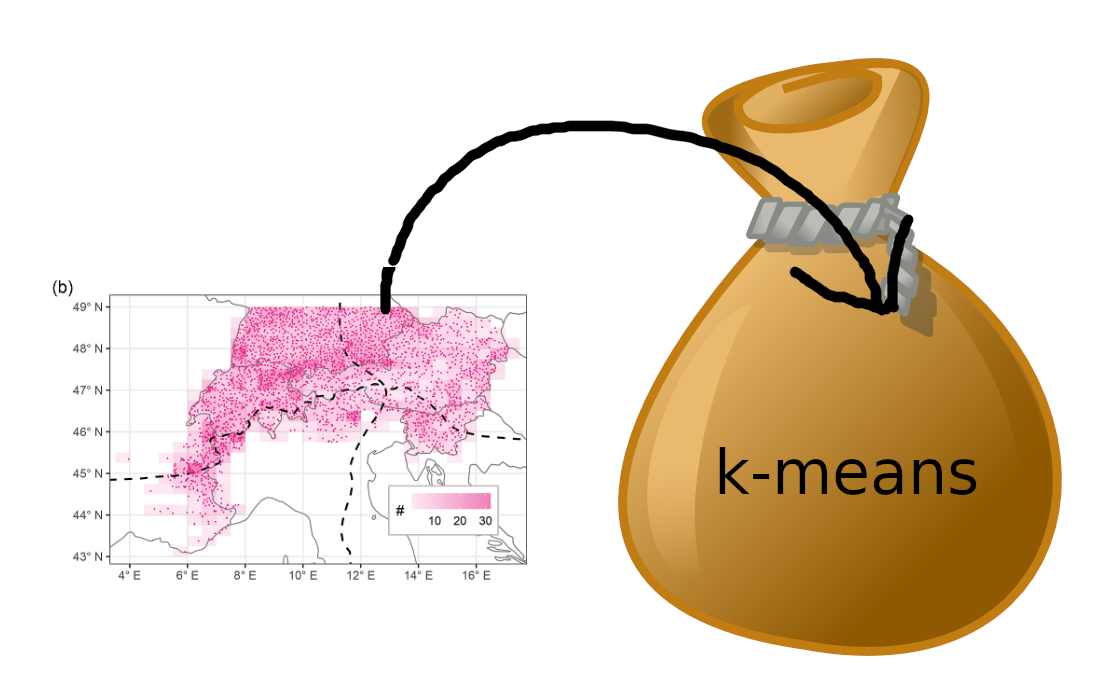
Introduction to k-means
Input to k-means:
Time series of daily snow depth (> 2000 stations, 30 years)

Snowfall 1921-2020
(below 2000m)
Data source

“noi prepareremo pei nostri posteri un materiale ben ordinato e prezioso per istabilire con ottimo fondamento il non facile edifizio della climatologia delle nostre regioni, al quale intendimento sono rivolti i nostri sforzi e tutti i nostri studi”
Denza F., BM 11(1), 1876
Courtesy: Daniele Cat Berro, Società Meteorologica Italiana
Snow depth trends 1971 - 2019
One station - Arabba (Veneto, 1640m)

Trend - linear
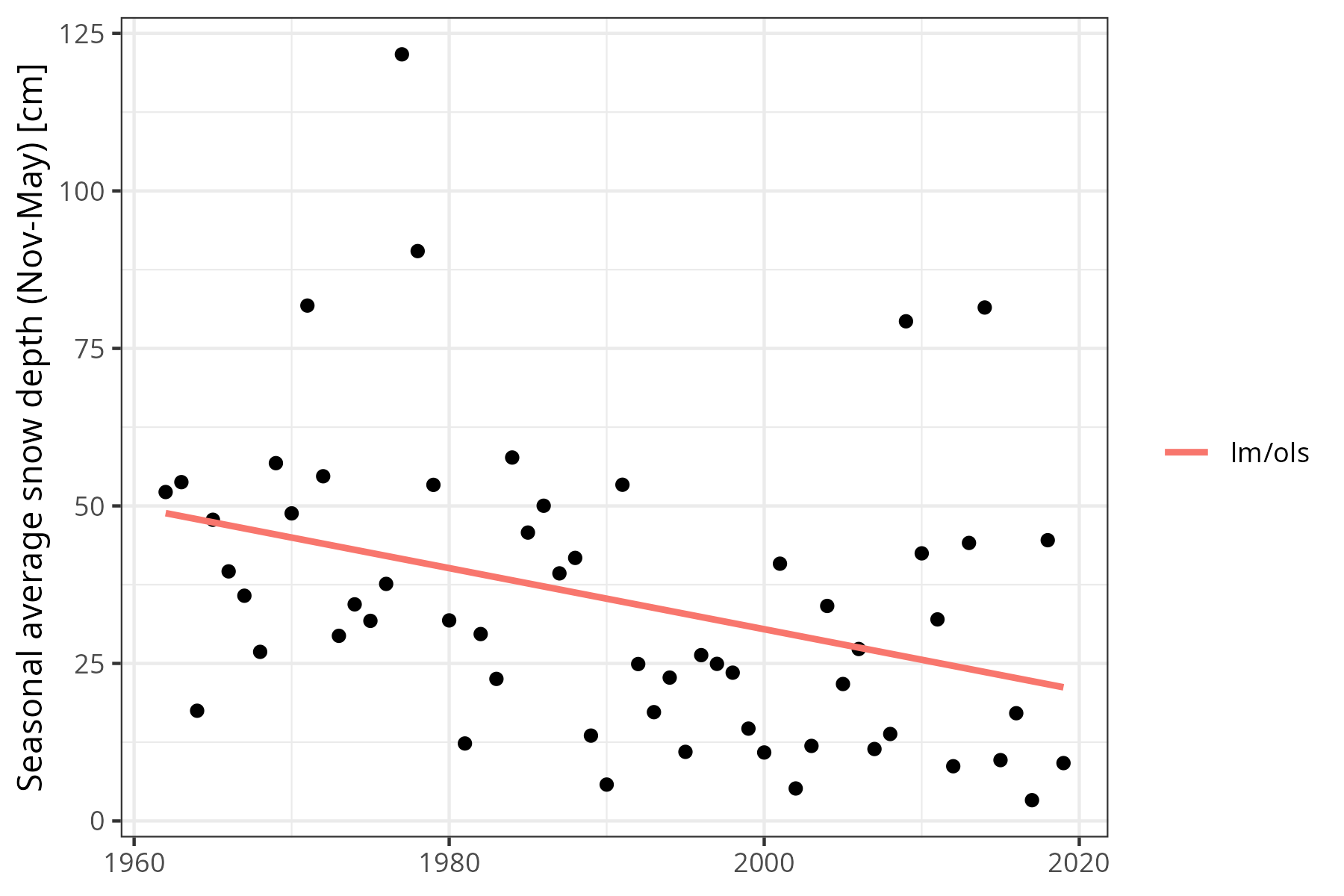
Trend - nonlinear

Trend - across the season
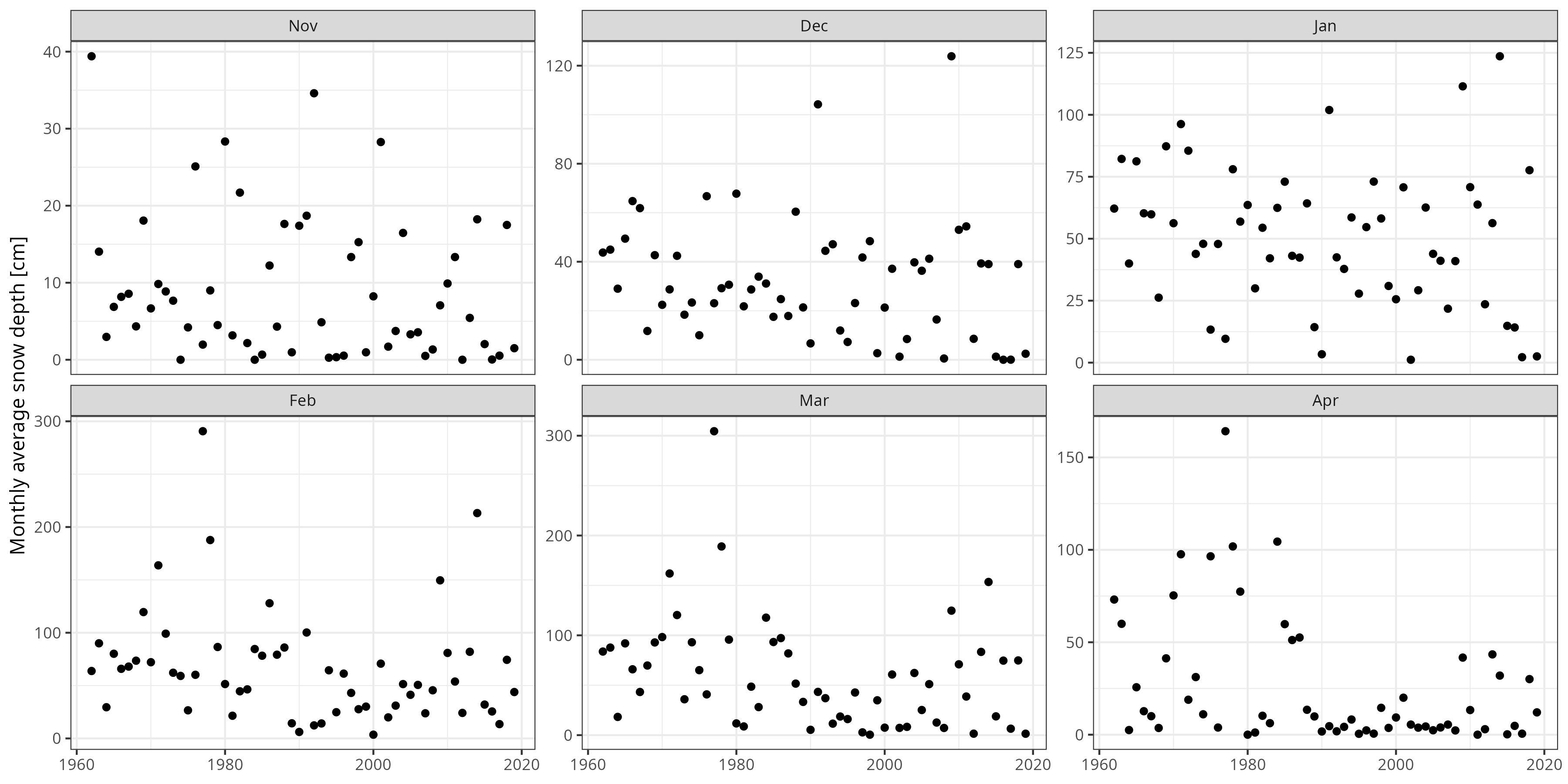
Trend - across the season - linear
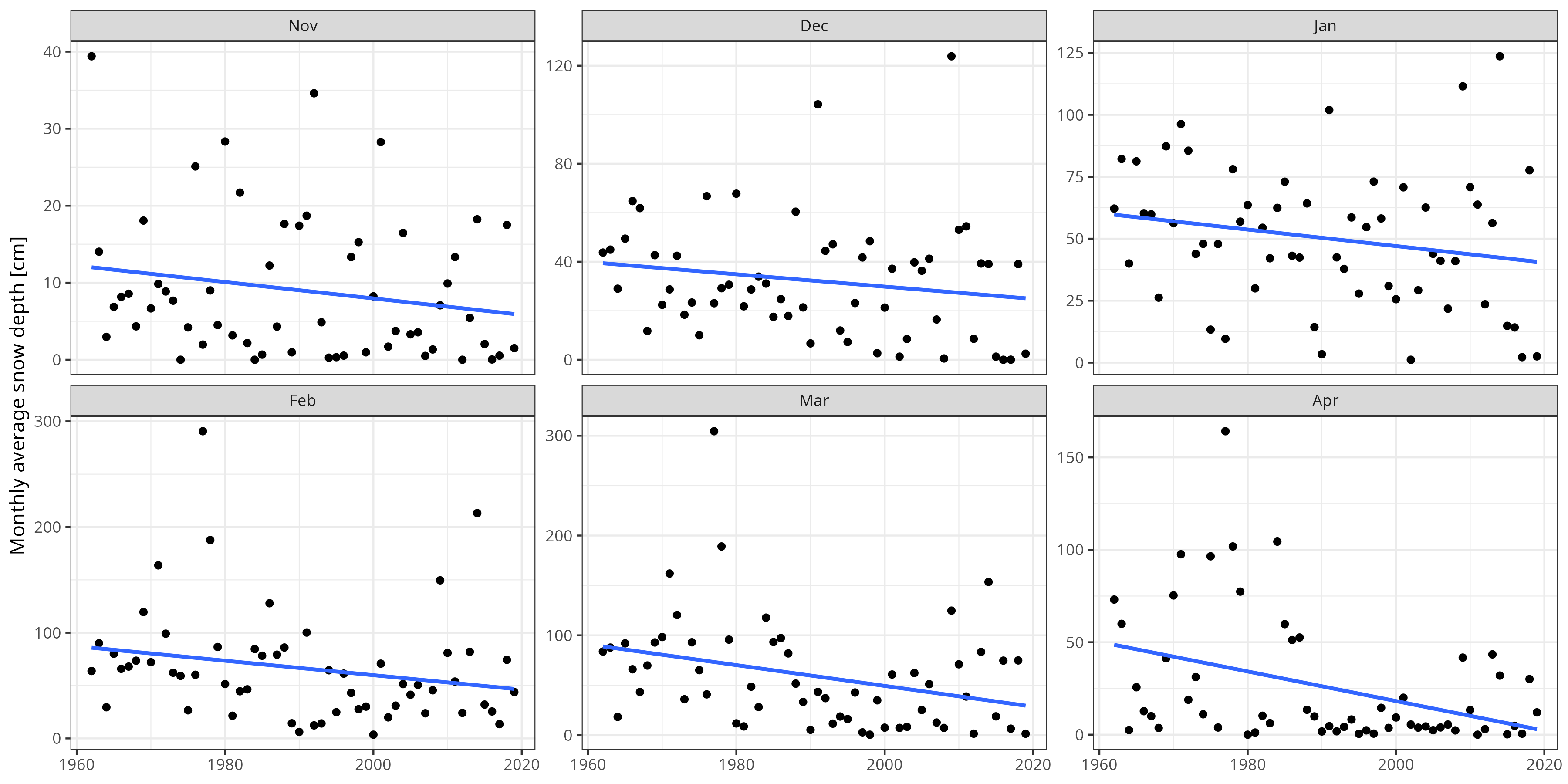
More indicators
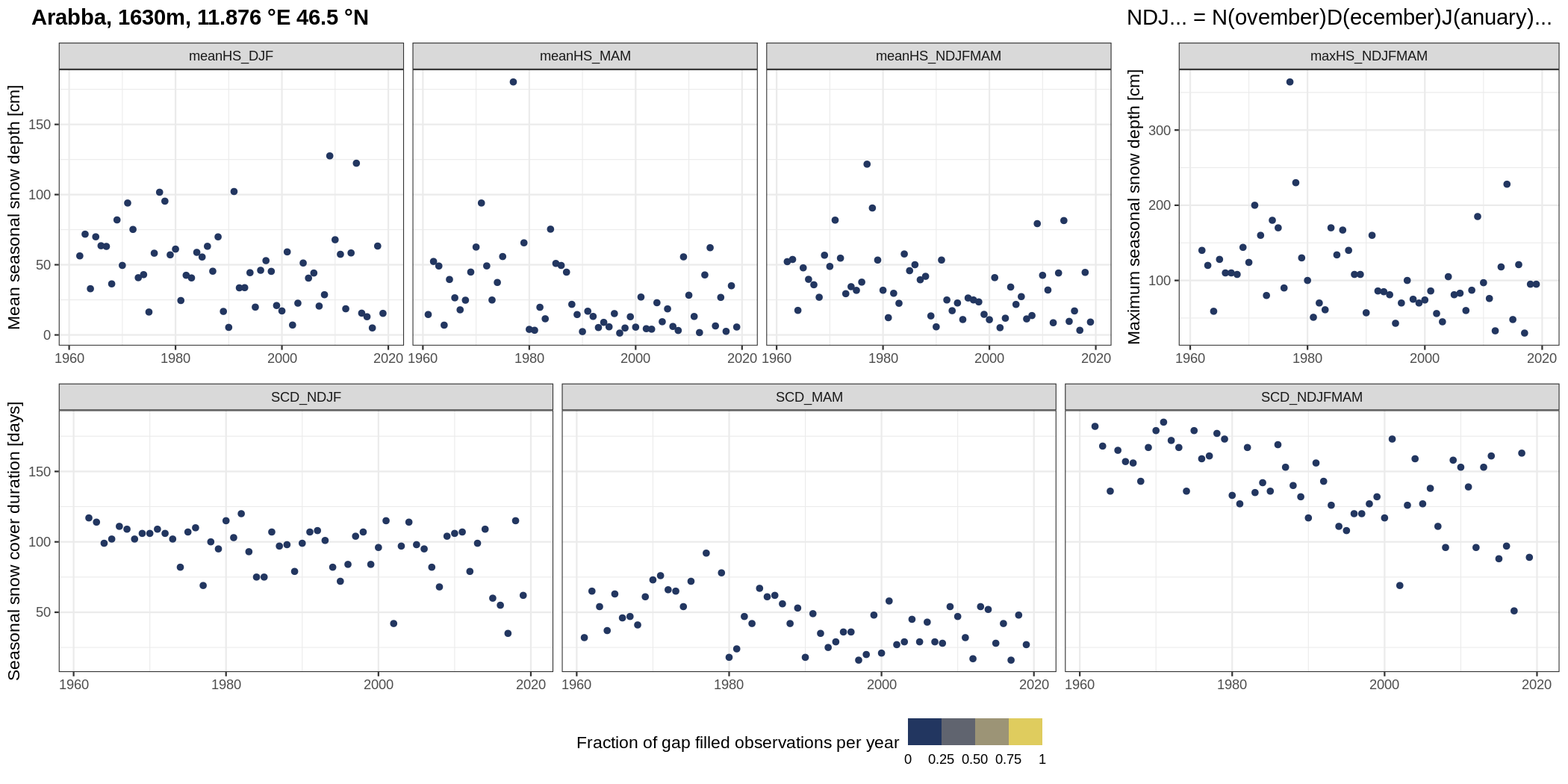
All stations
Results from statistical analysis: Linear Regression
\[ y_i = \beta_0 + \beta_1 * x_i + \epsilon_i \]
- \(y_i\) predictand (to be predicted)
- \(x_i\) predictor (used to predict, has a relationship to \(y\))
- \(i\) observation number from \(1...n\)
- \(\epsilon \sim N(0,\sigma^2)\) normally distributed errors (random)
- \(\beta_.\) coefficients to be estimated
- \(\beta_0\) intercept, value when \(x=0\)
- \(\beta_1\) slope, change in \(y\) per 1 unit of \(x\)
Linear regression in this case
\[ y_i = \beta_0 + \beta_1 * i + \epsilon_i \]
- \(i\) is year (1971-2019)
- \(y_i\) average snow depth (monthly, seasonally) in year \(i\)
- \(\beta_0\) intercept, value when \(x=0\), i.e., for year 0
- better: \(i\) is years after first year (0 to 49)
- then: \(\beta_0\) is average snow depth at the start year
- \(\beta_1\) change in average snow depth per year
- absolute trends per decade: \(10*\beta_1\)
- relative trends per decade: \(10* \frac{\beta_1}{\beta_0}\)
The future snow cover in the European Alps
Global vs. local
5-year averages
(2018-2022)
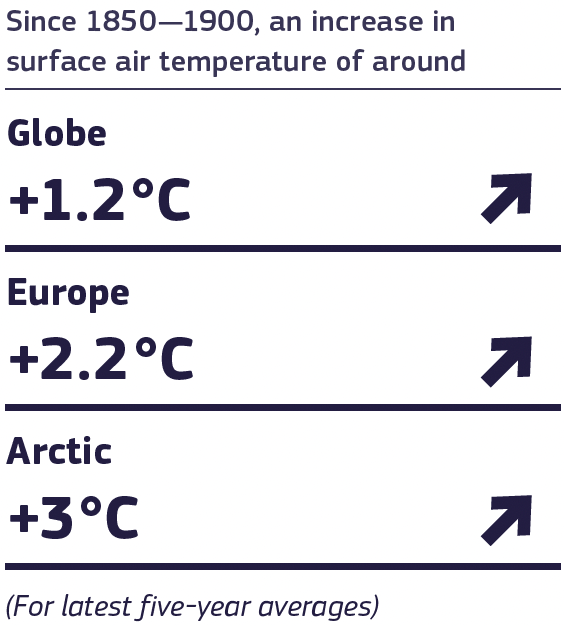
Climate and weather models
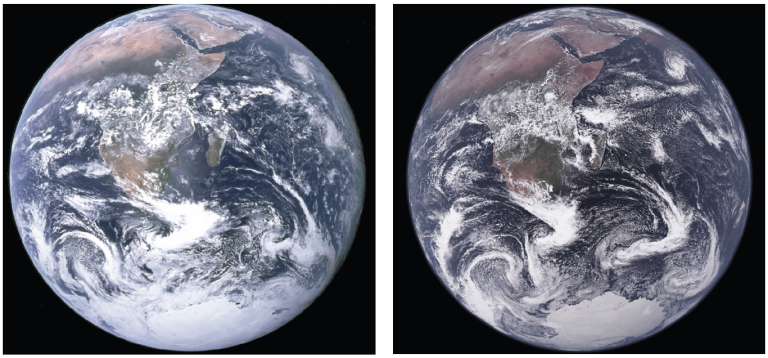
What is what?
- Foto from the astronauts of Apollo 17 (7 December 1972)
- Weather model simulation (7 December 1972)
Coding errors (“bugs”)
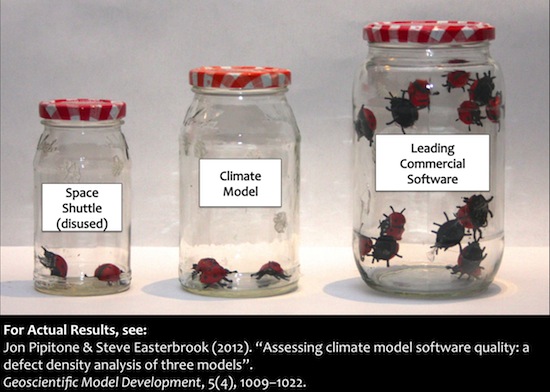
Climate projections are not predictions
Prediction:
- Thus it will be.
Scenario
- If A, then X.
- If B, then Z.
- …
Climate scenarios strategic management
Assumptions …
CMIP6, IPCC AR6 2021: Shared Socioeconomic Pathways
- a world of sustainability-focused growth and equality (SSP1)
- a “middle of the road” world where trends broadly follow their historical patterns (SSP2)
- a fragmented world of “resurgent nationalism” (SSP3)
- a world of ever-increasing inequality (SSP4)
- a world of rapid and unconstrained growth in economic output and energy use (SSP5)
- plus many other socio-economic assumptions on population growth, GDP development, …
Source: Wikipedia and CarbonBrief
-> Combined with radiative forcing in W/m², which can be related to mitigation targets
… translated into CO2 …
Source: Wikipedia
… translated into global climate

Source: mooc.fi
Europe’s future climate
- CMIP6 suite of global climate models (IPCC AR6, 2021)
- CMIP5 suite of global climate models (IPCC AR5, 2013)
- CORDEX regional climate models, dynamically downscaled CMIP5
- Scenario RCP8.5 (CMIP5) and ssp585 (CMIP6)
- continuously increasing GHG concentrations in the atmosphere
- 4-5 °C global warming until 2100
What does this mean for snow?
Temperature
- more rain instead of snowfall
- snow melts faster/earlier
- more intensive snowfall
Precipitation ?
- more rain and more snowfall
Together (at least for the Alps):
- less snow, short snow season
Snow prophets 2023-2024?
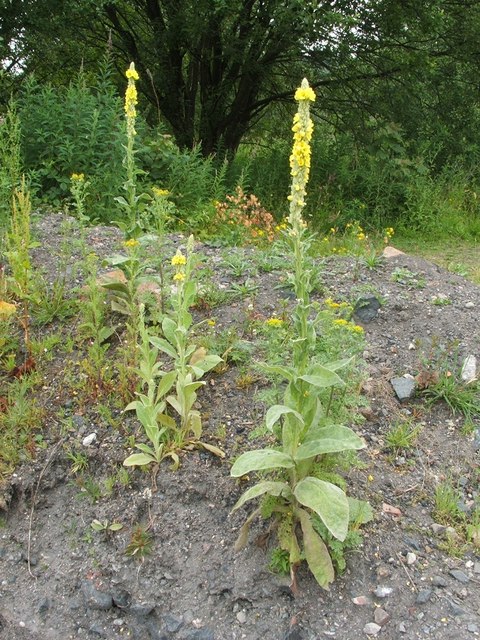
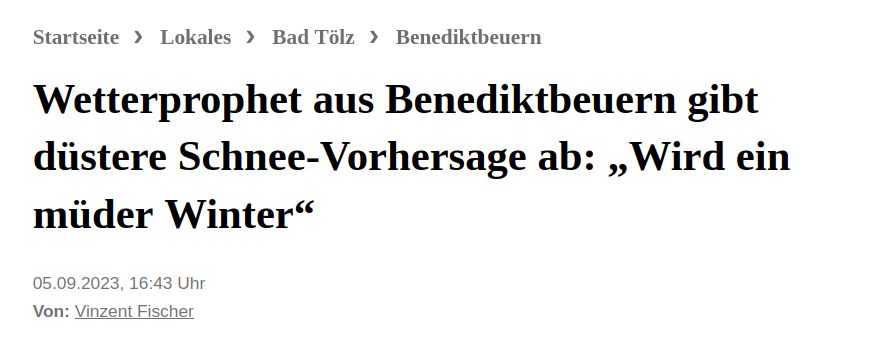
Climate dice
very little snow, a lot of snow
In the past:
And the future?
- ?
- ?
- ?
Contact
https://mitmat.github.io/slides-v2/
Eurac Snow Dossier, CliRSnow project
Thanks to the support of: UniTrento, European Union, Eurac Research, APPA (Provincia Autonoma di Trento), Climate Action South Tyrol, Scientists4Future South Tyrol
